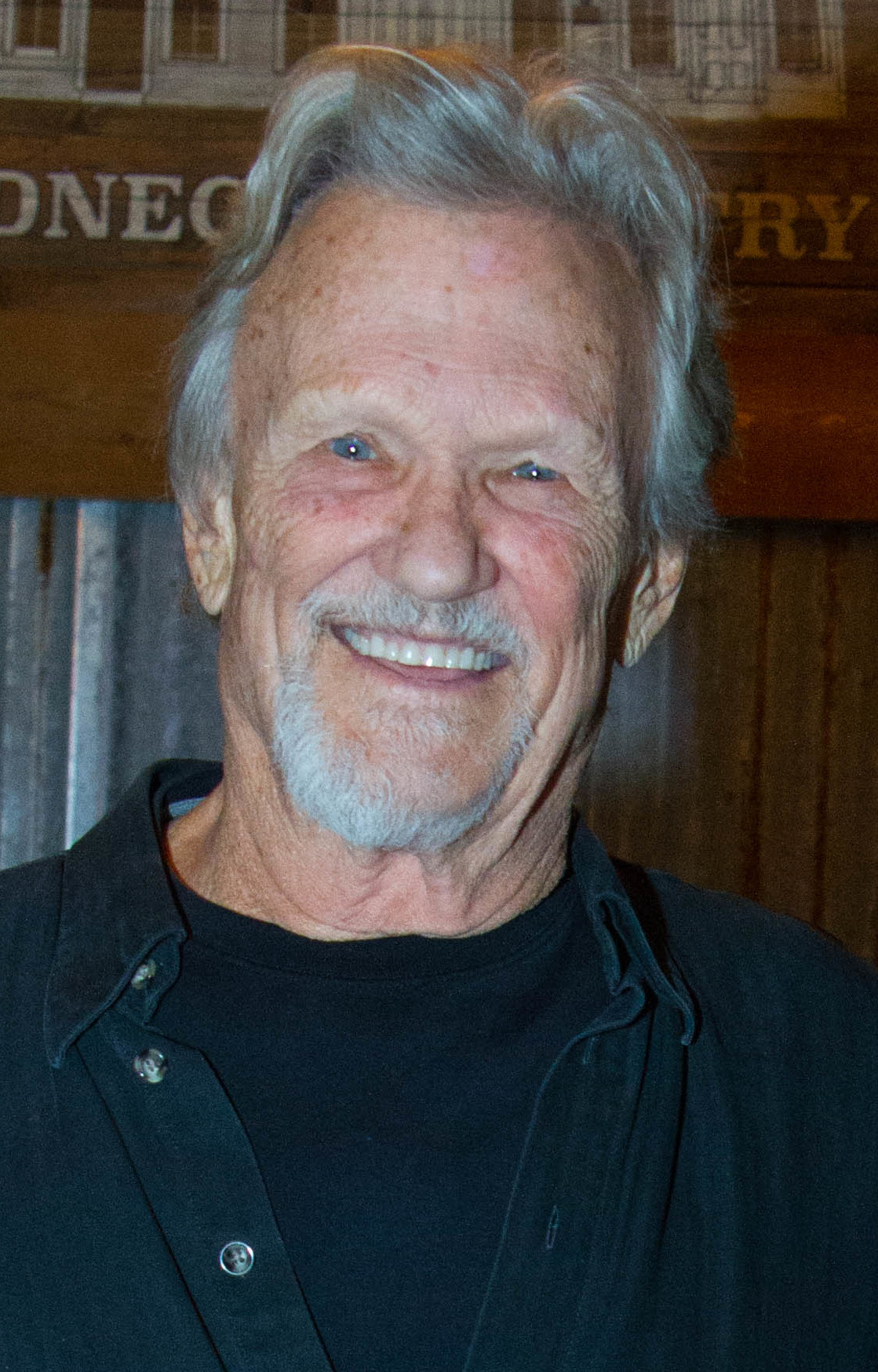
The passing of Kris Kristofferson at the age of 88 in 2024 marked the end of an extraordinary life, one that transcended the conventional boundaries of art and expectation. A true Renaissance man, Kristofferson carved an indelible path through American culture as a groundbreaking musician, a compelling actor, and a fiercely independent voice. His journey from a military officer and Rhodes Scholar to a pioneering figure in the outlaw country movement and a respected Hollywood presence remains a testament to his singular vision and unyielding spirit.
Kristofferson’s artistic fingerprint is characterized by a unique blend of rugged introspection and profound lyrical honesty. He moved away from the polished Nashville sound of his era, opting instead for a raw, more personal style that resonated deeply with audiences and fellow artists alike. His songs, often filled with vivid narratives and emotional depth, became hits for others even as he reluctantly stepped into the spotlight as a performer himself. This duality—the celebrated songwriter behind iconic tracks and the compelling, if sometimes understated, interpreter of his own work—defined much of his early career.
This article embarks on an in-depth exploration of Kristofferson’s remarkable life and career, delving into the distinct facets that shaped him into the legendary figure he became. From his disciplined upbringing and intellectual pursuits to his audacious leap into the tumultuous world of music and film, we will trace the evolution of a man who consistently chose authenticity over convention, leaving an enduring legacy that continues to inspire. Join us as we reflect on the formative experiences and pivotal moments that defined the first half of Kris Kristofferson’s storied journey.

1. **A Formative Beginning: Early Life and Military Service (1936-1965)**Born Kristoffer Kristofferson in Brownsville, Texas, on June 22, 1936, the future legend was the oldest of three children to Mary Ann Ashbrook and Henry Kristofferson, a United States Army Air Corps officer who would later rise to the rank of major general in the United States Air Force. His early years were marked by frequent relocation due to his father’s military career, with the family eventually settling in San Mateo, California. This upbringing instilled a sense of discipline and a strong military inclination, as his father actively encouraged him to pursue a similar path.
Kristofferson excelled academically and athletically from an early age. He graduated from San Mateo High School in 1954 and, at just 17, took on what he described as “the hardest job I ever had” – a summer position with a dredging contractor on Wake Island. His intellectual prowess shone at Pomona College in Claremont, California, where he pursued a literature major. He studied under Frederick Sontag, whom he credited as a significant influence, and his early writings, including prize-winning essays like “The Rock” and “Gone Are the Days,” were published in *The Atlantic Monthly*, revealing the nascent concerns and passions that would later inform his songwriting.
During his college years, Kristofferson was also a formidable athlete, appearing in *Sports Illustrated* in 1958 for his achievements in collegiate rugby union, American football, and track and field. He was instrumental in reviving the Claremont Colleges Rugby Club, which remains a Southern California institution. He graduated summa cum laude with a Bachelor of Arts degree in literature in 1958 and was elected to the Phi Beta Kappa society in his junior year. This academic excellence continued with a prestigious Rhodes Scholarship to the University of Oxford in England, where he studied at Merton College, earning a B.Phil. in English literature in 1960. While at Oxford, he even made an early, albeit unsuccessful, attempt at a singing career under the name Kris Carson, recording for The Rank Organisation’s Top Rank Records label.
His commitment to service continued after Oxford. In 1961, he joined the United States Army, where he was commissioned as a second lieutenant. Demonstrating exceptional dedication, he completed U.S. Army Ranger School and helicopter pilot training at Fort Rucker, Alabama. He then moved his wife, Frances “Fran” Mavia Beer, and their newborn daughter to West Germany, serving as a member of the 8th Infantry Division. During this period, he was promoted to captain and even formed a band to perform at service clubs, keeping his musical aspirations alive. His military career was poised for further advancement, with a re-assignment to teach English literature at the United States Military Academy in West Point, New York, in 1965, a path he ultimately chose to diverge from.
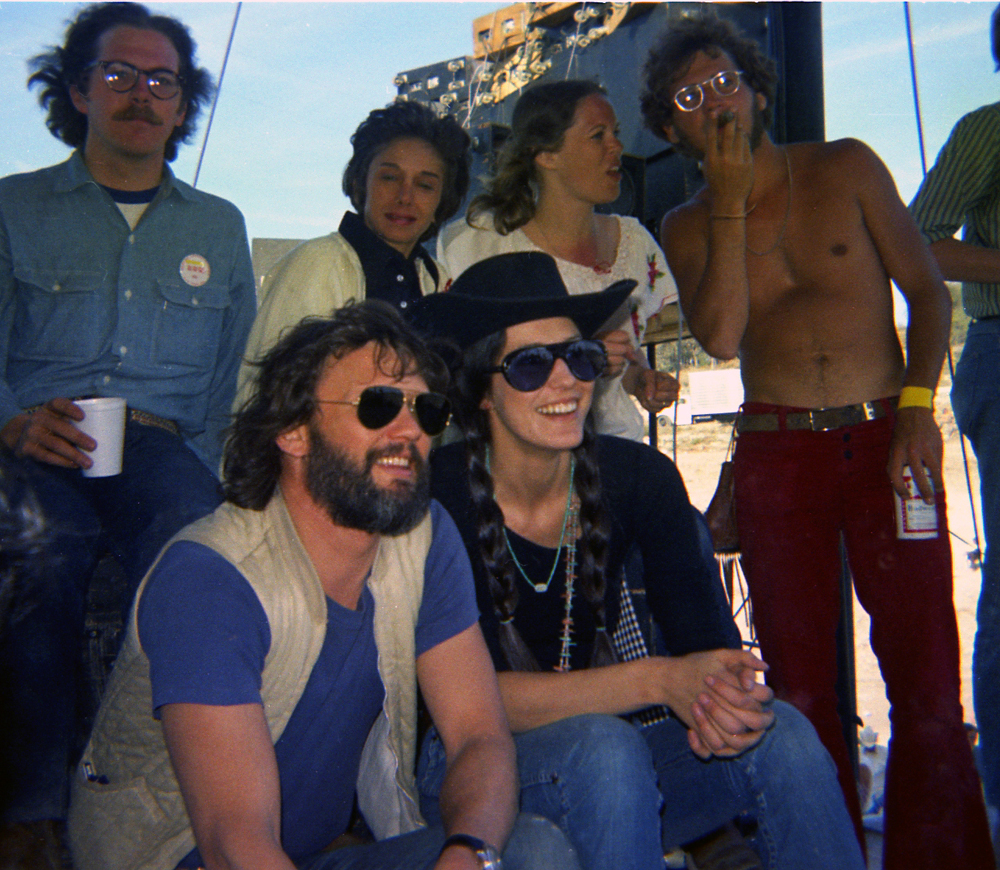
2. **The Nashville Calling: Transition to Songwriting (1965-1969)**In June 1965, Kristofferson made a pivotal decision during a two-week leave from his military assignments: he contacted Marijohn Wilkin in Nashville, Tennessee, and resolved to become a country music songwriter. This bold move meant resigning from the Army and relocating his family to Nashville, a decision that strained his relationship with his parents, who had envisioned a different future for him. Despite the familial friction, Kristofferson was resolute in pursuing his creative calling.
His early years in Nashville were a testament to his perseverance. To support himself and his family while chasing his dream, he took on a variety of strenuous jobs, working as a bartender, a construction worker, and a railroad worker. He later secured a janitorial position at Columbia Records, a seemingly humble role that strategically placed him within the heart of the music industry. This unique access allowed him to interact directly with artists and be present during recording sessions, absorbing the craft and making valuable connections.
His determination began to yield results through Wilkin, who signed him to her publishing house, Buckhorn Music. She pitched his song “Talkin’ Vietnam Blues” to singer Dave Dudley, marking an early step in his songwriting career. However, it was a period of personal and professional struggle. After his second child was born with esophagus issues in 1968, Kristofferson took a job at Petroleum Helicopters International (PHI) in Lafayette, Louisiana, flying workers to and from oil rigs in the Gulf of Mexico. It was during these exhausting trips that he would often write new songs, returning to Nashville on weekends to pitch his material, only to face admonishment from PHI for increased alcohol consumption.
Despite the exhaustion and personal difficulties, his songwriting began to gain traction. Upon returning to Nashville one fateful week, he learned that three of his compositions had been recorded by prominent artists: Roy Drusky had cut “Jody and the Kid,” Jerry Lee Lewis had taken on “Help Me Make It Through the Night,” and Roger Miller had recorded “Me and Bobby McGee.” This unexpected validation propelled him forward, cementing his commitment to music and setting the stage for his eventual breakthrough as a recording artist.
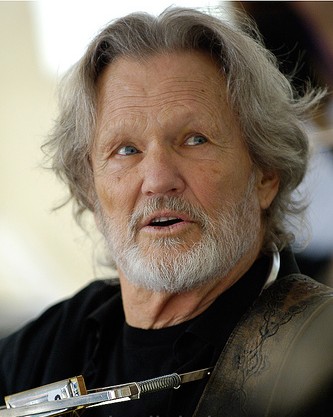
3. **A Reluctant Singer: Debut Album and Critical Acclaim (1969-1970)**Kristofferson’s path to becoming a recording artist was initially paved by serendipity and the keen ear of others. Through June Carter, he first attempted to pitch his material to her husband, Johnny Cash, famously landing a helicopter on Cash’s property to get his attention after his initial demos were lost. Cash, impressed by Kristofferson’s tenacity and talent, invited him to a “guitar pull” party and subsequently to perform at the 1969 Newport Folk Festival, significantly boosting his profile among industry peers.
Unsatisfied with Buckhorn Music, Kristofferson sought new opportunities. He was invited by Monument Records director Bob Beckham to play for him and label owner Fred Foster. Performing songs like “To Beat the Devil,” “Jody and the Kid,” “The Best of All Possible Worlds,” and “Duvalier’s Dream,” Kristofferson deeply impressed Foster, who not only signed him to Combine Music as a songwriter but also to Monument as a recording artist. Kristofferson, famously self-deprecating about his vocal abilities, was surprised, telling Foster at the time, “I can’t sing, I sound like a frog!” This candid assessment highlighted his primary ambition as a songwriter, with performing being a secondary, almost unexpected, development.
In 1969, as Kristofferson divorced his first wife, Fran Beer, and departed Nashville to participate in the production of Dennis Hopper’s *The Last Movie* in Peru, Cash continued to champion his original songs with other singers. Upon his return, Kristofferson discovered a burgeoning popularity, prompting him to begin work on his debut album for Monument. His manager and producer, Fred Foster, made a strategic decision to hold back some of Kristofferson’s original material from being passed to other artists, ensuring that these compositions, alongside those already recorded by others, would form the core of his first album.
Released in June 1970 and simply titled *Kristofferson*, the album featured all songs written or co-written by him, including a collaboration with Marijohn Wilkin’s son, John Buck Wilkin, on “Blame it on the Stones.” While not an immediate commercial blockbuster, *Kristofferson* garnered significant critical praise. Robert Hilburn of the *Los Angeles Times* lauded it for its ability to “combine lyric sophistication with country music’s traditional interest in everyday problems.” The commercial success of Johnny Cash’s rendition of “Sunday Mornin’ Comin’ Down” further cemented Kristofferson’s reputation, earning him his first Country Music Association award for Song of the Year that November, firmly establishing him as a formidable songwriting talent in Nashville.

4. **Hollywood Beckons: Early Film Career (1971-1972)**While his songwriting career was blossoming, Hollywood soon came calling for Kristofferson, presenting an unexpected, yet ultimately significant, avenue for his artistic expression. His initial foray into acting began with Dennis Hopper’s *The Last Movie* in Peru in 1969, a venture he joined while taking a break from Nashville. This experience provided an early taste of the film world, setting the stage for future cinematic engagements that would parallel, and at times overshadow, his musical pursuits.
In 1970, after making his debut performance as a singer at the Los Angeles nightclub The Troubadour, casting director Fred Roos of Bob Rafelson’s *Five Easy Pieces* invited him to audition for a leading role in *Two-Lane Blacktop*. Kristofferson, then signed to Columbia Records, arrived to the appointment intoxicated and subsequently left, a clear indication of his initial ambivalence towards an acting career. However, another opportunity soon arose: Columbia offered him Bill L. Norton’s script for *Cisco Pike*. Despite encouragement from his peers to decline the role and pursue acting lessons instead, Kristofferson accepted the part, articulating his approach by saying, “I read the script and I could identify with this cat” and that acting is “understanding a character, and then being just as honest as you can possibly be.” This candid philosophy would guide his performances throughout his career.
His film debut in *The Last Movie* officially occurred in 1971. The experience, while not widely successful, marked his entry into a new medium. The following year, on January 14, 1972, *Cisco Pike* was released, a film that saw Kristofferson in a role he personally connected with. The soundtrack for *Cisco Pike* notably featured songs from his recently released second Monument album, *The Silver Tongued Devil and I*, highlighting the synergy between his burgeoning music and film careers. This early period demonstrated his willingness to embrace diverse creative challenges, even if it meant venturing into unfamiliar territory without formal training, driven by an instinctual understanding of character.

5. **The Breakthrough Hits: Musical Momentum (1971-1972)**Following the critical success of his debut album, Kristofferson’s musical momentum surged in the early 1970s, propelled by both his own recordings and the widespread popularity of his songs when covered by other artists. After a challenging 18-month tour during which he battled walking pneumonia, exacerbated by alcohol consumption, and struggled with stage fright, he returned to Nashville in early 1971. There, he received Janis Joplin’s posthumous album *Pearl*, which contained a powerful cover of his composition “Me and Bobby McGee.” This poignant moment, coming before the album’s official release, underscored the profound impact of his songwriting.
The very next morning, revitalized by Joplin’s interpretation, Kristofferson returned to the studio to record his second Monument album, *The Silver Tongued Devil and I*, released in July 1971. He penned nine of the album’s ten tracks, including the successful single “Lovin’ Her Was Easier (than Anything I’ll Ever Do Again),” which reached number 46 on the Billboard Hot 100 and number 4 on the Adult Contemporary chart. The album also featured collaborations with Shel Silverstein on “The Taker” and Donnie Fritts on “Epitaph (Black and Blue),” along with a cover of Bobby Bare’s “Good Christian Soldier.” The album’s success marked a significant step in establishing him as a recording artist, moving beyond just a songwriter.
February 1972 saw the release of his third album, *Border Lord*, which comprised entirely new material. Sales for this album were initially sluggish. However, Kristofferson’s artistry continued to be recognized at the Grammy Awards that year, where he swept several nominations and ultimately won the award for Country Song of the Year for “Help Me Make It Through the Night,” a testament to the enduring quality of his compositions. This prestigious award solidified his reputation within the music industry, even as his solo album sales ebbed and flowed.
His fourth album, *Jesus Was a Capricorn*, initially experienced slow sales, but its trajectory dramatically shifted with the release of the third single, “Why Me.” This gospel-inspired track became a massive success, significantly boosting album sales and propelling *Jesus Was a Capricorn* to sell over one million copies, earning a gold disc from the RIAA on November 8, 1973. This period marked Kristofferson’s definitive breakthrough as a commercially successful recording artist, proving that his unique voice and introspective style could resonate deeply with a broad audience, securing his place in country music history.

6. **Artistic Partnerships and Commercial Peak (1973-1985)**The mid-1970s marked a period of both personal and professional blossoming for Kris Kristofferson, characterized by significant collaborations and continued commercial success. In April 1973, his alma mater, Pomona College, recognized his remarkable achievements by awarding him an honorary doctorate in fine arts during Alumni Weekend, an event notably attended by Johnny Cash and Rita Coolidge. Four months later, Kristofferson and Coolidge, a talented singer in her own right, solidified their personal and artistic bond by marrying.
Their marriage soon translated into a highly successful musical partnership. The duo released an album titled *Full Moon*, which became another commercial triumph, buoyed by numerous hit singles and Grammy nominations. Their combined talents and undeniable chemistry produced a distinctive sound that appealed to a wide audience. This collaboration extended beyond *Full Moon*, as they continued to record together, contributing to the rich tapestry of Kristofferson’s discography and earning them further critical acclaim and Grammy wins for tracks like “From The Bottle To The Bottom” in 1973 and “Lover Please” in 1975.
While Kristofferson’s fifth solo album, *Spooky Lady’s Sideshow*, released in 1974, proved to be a commercial failure and set a trend for many of his subsequent solo musical releases, his compositions continued to be a goldmine for other artists. Singers like Ronnie Milsap and Johnny Duncan found success with his material, further cementing his reputation as a master songwriter. Notably, Willie Nelson’s 1979 LP, *Willie Nelson Sings Kristofferson*, was a major hit, reaching number five on the U.S. Country Music chart and achieving Platinum certification in the U.S., illustrating the enduring power of Kristofferson’s writing even when performed by others.
This era also saw Kristofferson participating in significant cultural events, expanding his reach beyond traditional country music circles. In 1979, he traveled to Havana, Cuba, to perform at the historic Havana Jam festival, alongside a diverse lineup of international and Cuban artists, a performance captured in Ernesto Juan Castellanos’s documentary *Havana Jam ’79*. That same year, he and Rita Coolidge made a memorable appearance on *The Muppet Show*, showcasing their playful side and singing iconic songs. However, their marriage concluded in divorce in 1980. Kristofferson remarried to Lisa Meyers in 1983 and for a time, concentrated more on his thriving film career, with notable appearances in *Flashpoint* and *Songwriter* in 1984, the latter earning him an Academy Award nomination for Best Original Score and yielding a successful album of Nelson-Kristofferson duets.

7. **The Highwaymen: A Supergroup Legacy (1985-1995)**Following his renewed focus on film and a successful musical album with Willie Nelson, Kristofferson’s collaborative spirit reached a new zenith in 1985 with the formation of The Highwaymen. This country music supergroup, comprised of Kristofferson, Willie Nelson, Waylon Jennings, and Johnny Cash, brought together four of the genre’s most iconic and independent voices. Their self-titled debut album, released on May 6, 1985, became an instant success, resonating deeply with fans and critics alike.
Central to this triumph was their rendition of Jimmy Webb’s “Highwayman,” a track that became a signature for the group. This single was not only a commercial hit but also garnered significant industry recognition, earning the Academy of Country Music’s single of the year award in 1985. The synergy among these legends created a unique musical chemistry, allowing each artist’s distinctive style to complement the others, forging a sound that was both familiar and groundbreaking.
The supergroup continued their collaboration for a decade, releasing *Highwayman 2* in 1990, which also achieved success. This period solidified The Highwaymen’s place in country music history, showcasing the enduring power of these individual artists when united. For Kristofferson, it provided a renewed platform for musical impact, even as his solo recording career experienced a temporary dip, reinforcing his reputation as an integral figure in the outlaw country movement and beyond.

8. **Reinventing the Actor: Post-Highwaymen Film Career (1996-2018)**While his musical output with The Highwaymen continued to garner acclaim, the mid-1990s marked a significant resurgence in Kristofferson’s film career. This revitalization began notably with John Sayles’ 1996 film *Lone Star*, which allowed him to showcase his nuanced acting capabilities to a new generation of filmmakers and audiences. This critically acclaimed role opened doors to a diverse range of projects that further cemented his presence in Hollywood.
One of his most iconic and widely recognized roles during this period came in Stephen Norrington’s 1998 film *Blade*, where he played Abraham Whistler, the venerable mentor to Wesley Snipes’ titular character. Kristofferson reprised this role in *Blade II* (2002) and again in *Blade: Trinity* (2004), introducing him to a global audience in the action-horror genre. His portrayal of the rugged, world-weary vampire hunter became a defining characteristic of the trilogy, demonstrating his versatility and enduring appeal.
Beyond the *Blade* franchise, Kristofferson maintained a consistent and varied presence on screen. He appeared in films such as *Fire Down Below* (1997) with Steven Seagal, *A Soldier’s Daughter Never Cries* (1998), *Payback* (1999), and Tim Burton’s remake of *Planet of the Apes* (2001). His performances often brought a gravitas and authentic ruggedness to his characters, reflecting his own life experiences and independent spirit.
His later film credits included *Dreamer: Inspired by a True Story* (2005), where he played “Pop,” a retired thoroughbred horse trainer, and *Disappearances* (2006), a film about whiskey running during the Great Depression. Kristofferson’s presence lent depth to these narratives. His career continued with appearances in *Bloodworth* (2010), *Dolphin Tale* (2011), and its sequel *Dolphin Tale 2* (2014), showcasing his enduring ability to connect with audiences across different genres. His final film, *Blaze*, was released in August 2018, marking a poignant culmination of a remarkable acting career. Furthermore, he lent his distinctive voice to the hit 2010 video game *Fallout: New Vegas*, portraying the character Chief Hanlon of the NCR Rangers, expanding his artistic reach into digital media.
9. **The Pilgrim’s Song: Later Musical Output and Self-Reflection (1986-2016)**While The Highwaymen brought collective success, Kristofferson’s solo musical journey in the latter half of his career continued with a consistent, albeit often less commercially explosive, output. His 1986 album, *Repossessed*, stood out for its politically aware themes, notably featuring “They Killed Him,” a poignant tribute to civil rights heroes like Martin Luther King Jr., Jesus, and Mahatma Gandhi. This album underscored his unwavering commitment to social commentary through his art, a characteristic that defined much of his unique voice in music.
After a period where his solo recording career somewhat receded, Kristofferson revitalized his musical focus with *The Austin Sessions*, released in 1999. This album saw him rework some of his most beloved songs with the assistance of esteemed artists such as Mark Knopfler, Steve Earle, and Jackson Browne. The project offered a fresh perspective on his classic compositions, reminding listeners of the profound lyrical depth and emotional resonance of his songwriting. The album’s release came shortly before he underwent coronary artery bypass surgery, highlighting his dedication to his craft despite personal health challenges.
In the new millennium, Kristofferson continued to produce new material, releasing *This Old Road* in 2006, his first album of new songs in 11 years. This was followed by *Closer to the Bone* in 2009, produced by Don Was. Prior to its release, Kristofferson remarked on the album’s intimacy, stating, “It has a general mood of reflecting on where we all are at this time of life.” These albums demonstrated a maturing artist, grappling with themes of mortality, reflection, and enduring spirit, all delivered with his distinctively rough yet honest vocal style, which he famously self-deprecatingly described as “like a frog,” acknowledging that as he aged, any quality it once had was beginning to decay.
His output continued into the 2010s with *Feeling Mortal* in early 2013, another collection of original songs. This was followed by his last studio album issued during his lifetime, *The Cedar Creek Sessions*, recorded in Austin and released in June 2016. This album, which featured a blend of old and new songs, garnered a Grammy Award nomination for Best Americana Album that December, a testament to the enduring quality of his later works. In addition, Light in the Attic Records released *Please Don’t Tell Me How the Story Ends: The Publishing Demos* in May 2010, offering a rare glimpse into the raw, original recordings of his legendary compositions from his early Nashville years, including the original “Me and Bobby McGee.”
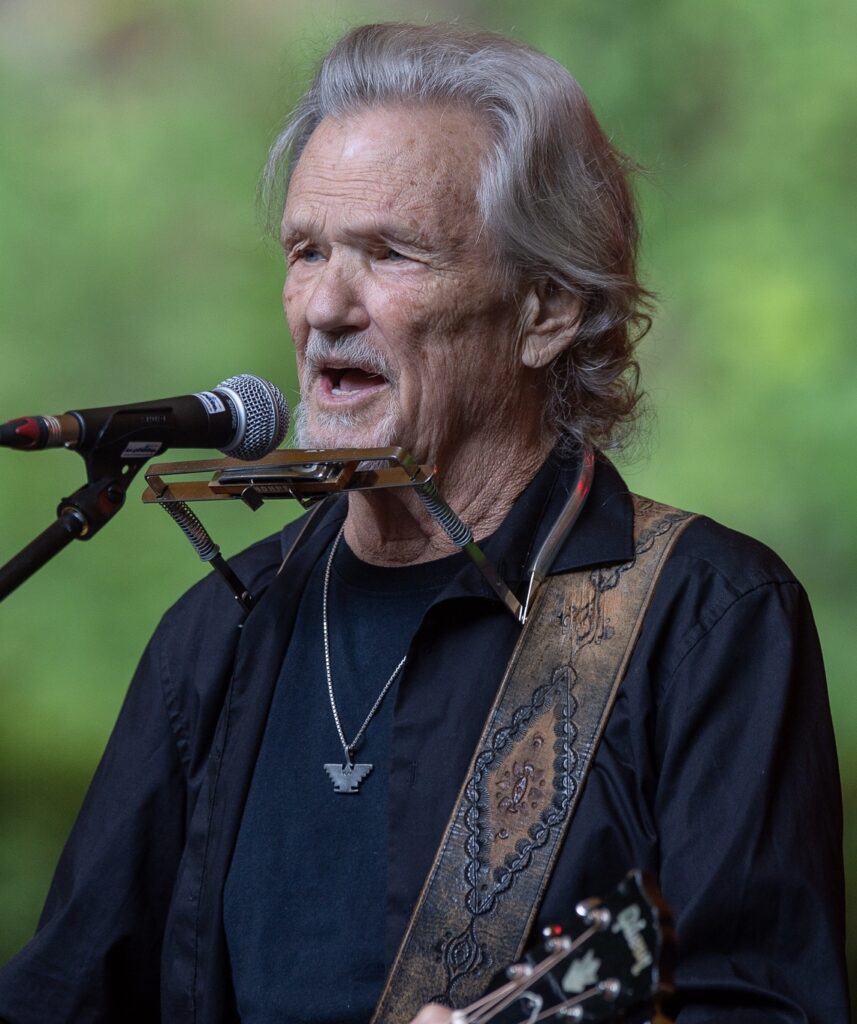
10. **Accolades and Enduring Recognition (1977-2019)**Throughout his storied career, Kris Kristofferson received a multitude of prestigious awards and honors, reflecting the profound impact of his contributions across music and film. His exceptional songwriting talent was recognized early, with his induction into the Nashville Songwriters Hall of Fame in 1977, followed by the Songwriters Hall of Fame in 1985. These early accolades underscored his pivotal role in shaping the lyrical landscape of country music and popular song.
As the decades progressed, the depth and breadth of his influence continued to be celebrated. In 2003, he received the “Spirit of Americana” free speech award from the Americana Music Association, honoring his courageous and consistent advocacy for social justice. The following year, in November 2004, Kristofferson was deservedly inducted into the Country Music Hall of Fame, a pinnacle achievement that cemented his legendary status within the genre he helped redefine.
His peers and industry institutions continued to bestow honors upon him. In 2006, he received the esteemed Johnny Mercer Award from the Songwriters Hall of Fame. The next year, in April 2007, CMT presented him with the Johnny Cash Visionary Award. Accepting the honor, Kristofferson stated, “John was my hero before he was my friend, and anything with his name on it is really an honor in my eyes,” reflecting on the profound connection he shared with Cash. This recognition affirmed not only his artistic vision but also his deep personal integrity.
Kristofferson was a three-time Grammy Award winner, out of 13 total nominations. His competitive Grammy wins included Best Country Performance by a Duo or Group for “From The Bottle To The Bottom” in 1973 and “Lover Please” in 1975, both with Rita Coolidge. A crowning achievement arrived in 2014 when he received the Grammy Lifetime Achievement Award, a testament to his entire body of work. Additionally, in November 2009, he was honored as a BMI Icon at the 57th annual BMI Country Awards, acknowledging his 48 BMI Country and Pop Awards for songwriting. His career was fittingly capped off with the Country Music Association Lifetime Achievement Award in 2019, celebrating a life dedicated to artistic excellence and fearless expression.
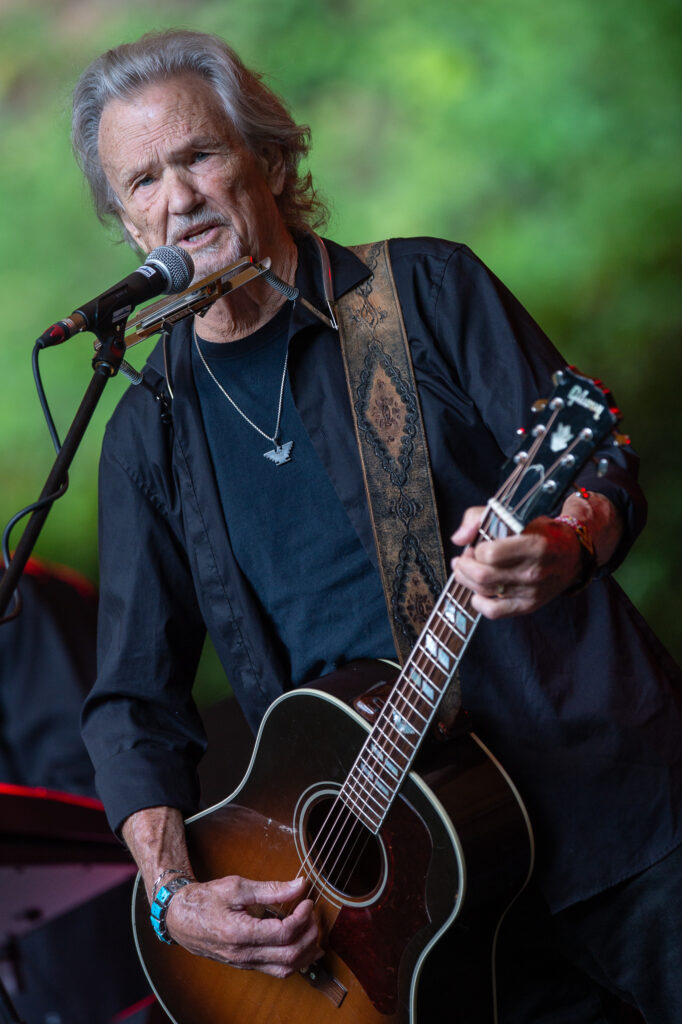
11. **A Voice for Justice: Political Activism and Advocacy**Beyond his artistic achievements, Kris Kristofferson was a courageous and unwavering voice for justice, using his platform to advocate for causes he deeply believed in. He was a vocal opponent of the Gulf War and Iraq War, and consistently criticized a number of United States military interventions and foreign policy positions. These included U.S. support of the Contras during the Nicaraguan Revolution, the United States invasion of Panama, and the Apartheid government in South Africa, demonstrating a lifelong commitment to anti-imperialist views.
Interestingly, while his debut LP included a pro-Vietnam War song, Kristofferson later transformed his stance, becoming an ardent opponent of the war after speaking with returning soldiers who had witnessed atrocities. He cited a soldier’s account of seeing others throwing people out of helicopters during interrogation, stating, “The notion that you could make a young person do something so inhumane to another soldier—or even worse, a civilian—convinced me that we were in the wrong.” Despite his evolving anti-imperialist views, he remained proud of his military service, famously calling himself a “dove with claws,” embodying a complex patriotism rooted in justice.
His advocacy extended to domestic issues as well. Kristofferson was a dedicated supporter of the United Farm Workers, campaigning with Cesar Chavez for the passage of Proposition 14 and continuing to play at benefits for the UFW through the 2010s. His commitment to human rights also saw him perform at a benefit concert for Leonard Peltier in 1987. In 1995, he dedicated a song to Mumia Abu-Jamal at a Philadelphia concert, an act that was met with boos from the crowd, highlighting the controversial nature of some of his stances.
Such outspokenness often came with personal and professional consequences. Kristofferson candidly admitted to finding “a considerable lack of work as a result” of his performances in benefit concerts for Palestinian children, illustrating the price he was willing to pay for his convictions. His solidarity was further demonstrated at a Bob Dylan anniversary concert in 1992, where he showed support for Sinead O’Connor when she was booed by the crowd following her protest on *Saturday Night Live*. Kristofferson’s consistent moral compass, even in the face of unpopularity, defined him as an artist and a humanitarian whose principles transcended commercial considerations.
Read more about: Rosa Roisinblit: A Century of Unyielding Truth-Seeking in Argentina’s Darkest Hour
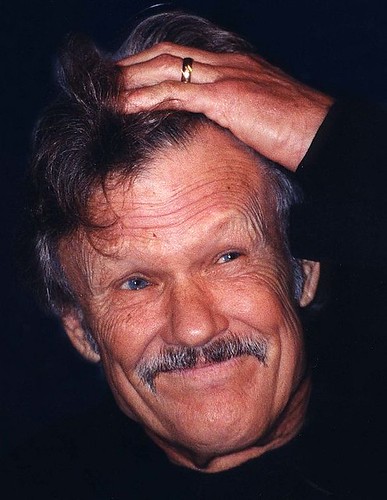
12. **The Final Verse: Retirement, Passing, and Enduring Legacy (2021-2024)**In January 2021, after a career spanning over five decades, Kris Kristofferson announced his retirement from performing, citing both his age and concerns regarding the ongoing COVID-19 pandemic. His manager, Tamara Saviano, described the decision as “an evolution, and it just felt very organic,” marking a serene conclusion to his public performing life. His final public appearance was a poignant moment, singing a cover of “Lovin’ You Was Easier” with Rosanne Cash at the Hollywood Bowl on April 29, 2023, during a concert celebrating Willie Nelson’s 90th birthday, a performance later released as part of *Long Story Short: Willie Nelson 90*.
Kris Kristofferson passed away peacefully in his Hana, Hawaii, home on September 28, 2024, at the age of 88. His family chose not to disclose a specific cause of death, maintaining a private reflection on his life. His passing prompted an outpouring of tributes from across the globe, a testament to the vast and varied communities he touched through his music, film, and activism.
A deeply poetic soul, Kristofferson had made a specific request regarding his final resting place: the first three lines of Leonard Cohen’s “Bird on the Wire” to be inscribed on his tombstone. These lines, “Like a bird on the wire / Like a drunk in a midnight choir / I have tried in my way to be free,” encapsulate the essence of his existence—a constant striving for authenticity and freedom, often against conventional currents, sung with a voice that was both vulnerable and resolute.
Tributes flooded social media and news outlets from countless family members, associates, and fellow artists. Figures such as Dolly Parton, Reba McEntire, and Miranda Lambert shared their remembrances. Willie Nelson and Ashley McBride published their own heartfelt tributes, collectively painting a picture of a man universally admired for his integrity, talent, and humanity. This vast chorus of appreciation underscored his indelible mark on countless lives and the cultural landscape.
The passing of Kris Kristofferson did not signify an end but rather the quiet closing of a monumental chapter. His legacy is etched not only in the timeless melodies and compelling narratives he created but also in the unwavering courage with which he lived. A true Renaissance man, he moved with equal grace and conviction through military service, academic pursuits, groundbreaking songwriting, memorable acting, and fearless activism. Kristofferson consistently chose authenticity over convenience, leaving behind an artistic and moral blueprint that will continue to inspire generations to seek their own truth and sing their own song, always striving, in their own way, to be free.



